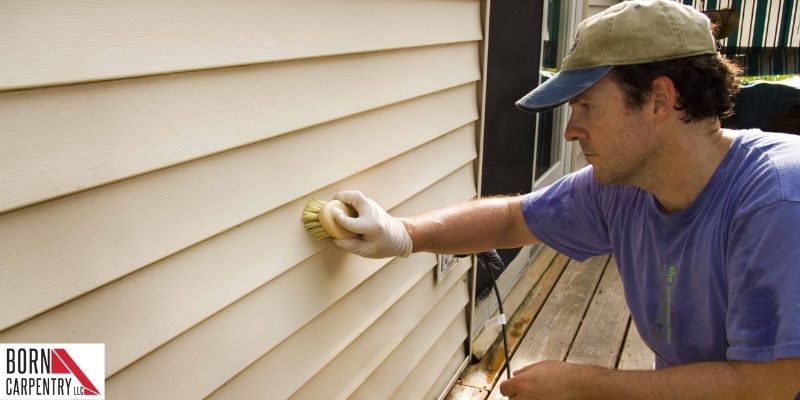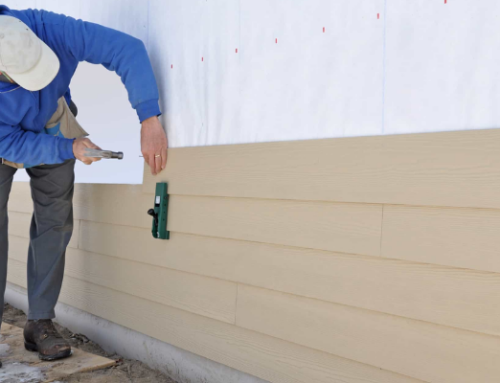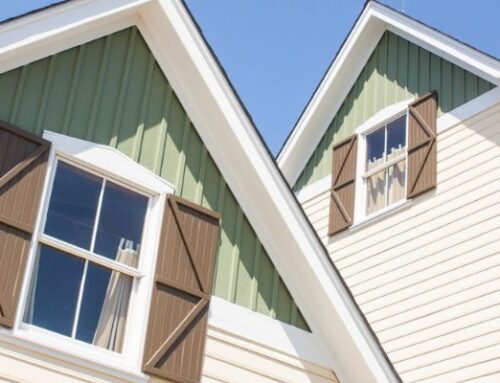Many homeowners often neglect the siding of their house. This is because they forget its importance and how much of a protective layer it is to their homes. Failing to take care of it regularly can lead to costly repairs down the line. Siding that is well-maintained, however, will effectively keep your energy bills at manageable levels, among many other benefits.
Types Of Siding Materials And How To Care For Them
The winter weather can be incredibly harsh. For this reason, your siding needs to be well taken care of so that it can function properly during this cold season. There are different siding materials available, and they all require some special kind of care to some extent.
Here are some common siding materials and how to care for them:
Wood Siding

A sophisticated wood siding provides the charm that gives your home a classic and appealing look. Wood siding comes in many grades and varieties. It is mostly used for premium renovation projects. It is incredibly easy to cut wood into shapes and place it on your house. However, you should know that wood is more expensive than other siding materials; Nevertheless, you will get your money’s worth if you go for wood siding. This siding material is a popular choice because it offers the best aesthetic.
Keep in mind that wood is vulnerable to rot. Therefore, you must keep your wood siding in good condition during the winter months. One good way to maintain it is by staining or painting it. Doing so helps to prevent it from deteriorating early.
Vinyl Siding
Vinyl siding comes in a variety of colors and textures, and vinyl is an incredibly durable material. Vinyl is a versatile and lightweight material that can be installed over existing materials.
You should regularly clean the surface of vinyl siding whenever dust or dirt accumulates on it. You can wash it down using household cleaning materials and a garden hose.
Furthermore, you should avoid painting over vinyl siding. This will ensure that you do not void the manufacturer’s warranties on it. You should also fix or replace a piece of siding if it gets damaged. When installing a new siding strip, ensure that you do so in moderate weather.
Fiber Cement Siding
Fiber cement siding is a great option for your home. This is because it is very durable and resistant to different types of temperatures and weather. Typically, fiber cement siding requires less maintenance. However, you must still care for it because it is not completely impervious to the elements.
Caring for your fiber cement siding includes painting it and checking the caulk around your home. Ensure that you fill gaps if you find any– doing so will help retain your home’s heat. In turn, your utility bills will be kept under control.
5 General Tips For Caring For Your Siding This Winter
The exterior of your home must be taken care of. Regularly maintaining your home’s siding will ensure that it remains in good condition for years to come. To help you with that, here are 5 general tips for caring for your siding this winter:
1. Inspect Your Home’s Siding
The exterior of your home is regularly exposed to elements. This can cause the siding material to slowly deteriorate. After the effect of the summer months, your siding may have incurred holes, rot, mold, unevenness or cracks. It can save you money, stress and time when you notice any of these signs of trouble before winter.
The perfect opportunity you have to thoroughly inspect your home’s siding is during autumn weather. When doing these checks, ensure that you inspect every panel of the siding. Check for missing, damaged or loose parts.
2. Replace Damaged Siding
Replacing damaged siding is another maintenance tip you should not ignore. In some cases, repairs may be too extensive to be done to damaged siding. In such an instance, you should replace it. If you are not certain of what you need, consult an expert.
A reliable expert will help do the inspection and figure out if your siding needs repair or replacement. However, you should install new siding if you want to improve the curb appeal of your home. Brand new siding will also help in protecting your home against elements. And it will also help in managing your home’s energy efficiently.
3. Complete All Necessary Repairs
You must not delay after you have identified any damage to your home’s siding. The damage can worsen quickly (especially in the winter) if you do not address it. It is recommended that you do not use DIY methods for repairs.
A local siding expert can help you carry out the necessary repairs. You can prolong the siding material’s service life and efficiency when you fix issues while they are still minimal.
4. Thoroughly Clean Your Siding

Your siding is a part of your home’s exterior that can collect debris. Over time, these collected particles can trap moisture and cause damage. Ensure that you gently scrub and spray away any dirt or mildew you find on your siding.
Furthermore, make sure you check all the small crevices. Get rid of spider webs and nests that you find. This will prevent critters from making your house their home during the winter months.
5. Clean The Gutters
While caring for your siding, you must consider protecting it from moisture damage. Remove dust, dirt, autumn leaves and any other debris from your gutters. This will ensure that water flows away from your house properly.
Conclusion
Your home’s siding should be cared for at all times. You must do all you can to keep it in good shape during the winter months. These tips for caring for your home’s siding will ensure that you protect your home from the elements. Need siding work done? Call Born Carpentry of Andover, Minnesota, at 612-747-8003.






